One type of avian vocal signal the song has acquired special attention from researchers. Song has been defined in numerous ways, but it is generally accepted that songs are long, loud vocalizations, typically delivered from an exposed perch, with the presumed function of attracting mates or repelling territorial intruders. This definition of song is not very precise, and indeed the difference between songs and other types of bird vocalizations is somewhat arbitrary. Nonetheless, this general definition is appropriate in many situations because most birds use some sort of special, conspicuous vocalizations to attract mates or defend territories.
Songs
Complexity of song among various species
Because songs are often sung loudly and constantly, they are often the most noticeable of the vocalizations that we hear from birds.
The complexity of song varies among bird species. In some, such as the Superb Lyrebird of eastern Australia, the song is by far the most complex vocalization produced. In other species, however, the songs will be less complex than other vocalizations. For example, the “hey‐sweetie” song of Black‐capped Chickadees is much simpler than their gargle call.
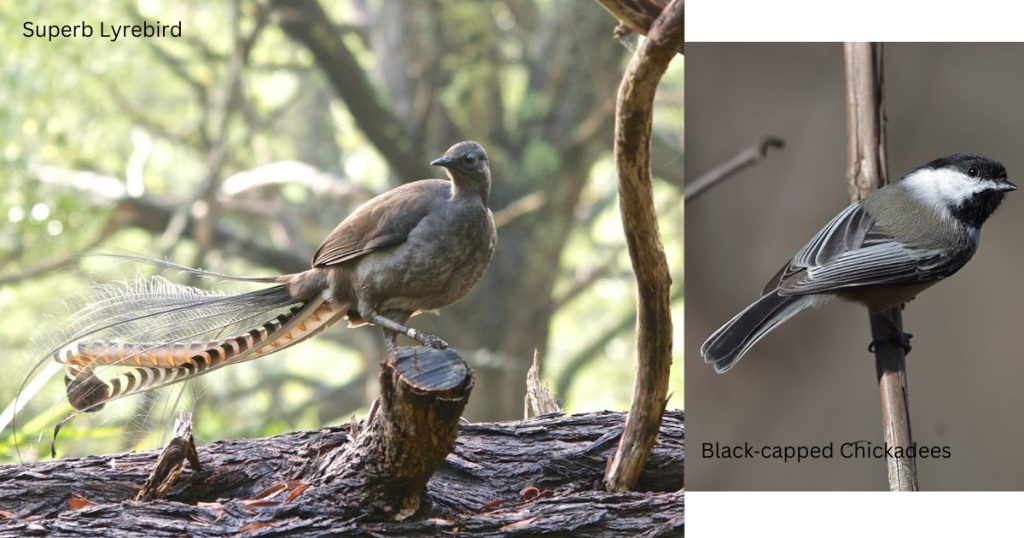
Does both male and female birds sing?
The song is often considered a behavior of male birds, but females and males both sing in many bird species, especially in tropical habitats. For example, females sing even more than males in the Streak‐backed Oriole and the Stripe‐headed Sparrow, both of which are found in Mexico and Central America. Later we will discuss ways in which female birds use song.
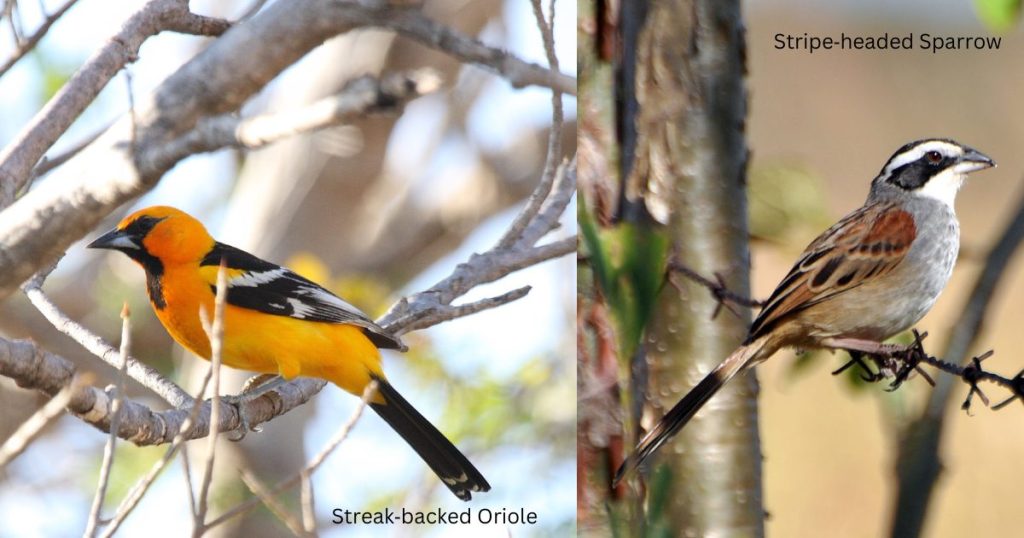
Oscines a songbird group
Songs are especially prominent among the 4600 or so species in the oscine subgroup of the order Passeriformes. The oscines, known informally as the songbirds, are renowned for their singing ability. Unlike most other birds, songbirds learn many components of their songs, which therefore can be quite complex.
Can birds sings different type of songs?
One aspect of this complexity is the number of different types of songs an individual sings, a number that varies immensely among songbird species. Many songbird species have multiple song types in their repertoires.
A European male Common Chaffinch, for example, may sing up to six different “chip chip chip chooee chooee cheeoo” song types. Each song type has a distinctive structure and sequence of notes; the differences are visible on spectrograms and are audible to anyone who listens carefully.
Various bird species and their variety of songs
A male Common Chaffinch typically sings 2 to 15 or so renditions of one single song type, but then he switches abruptly to another type, and eventually to another until he returns to sing, with great fidelity, the initial type.
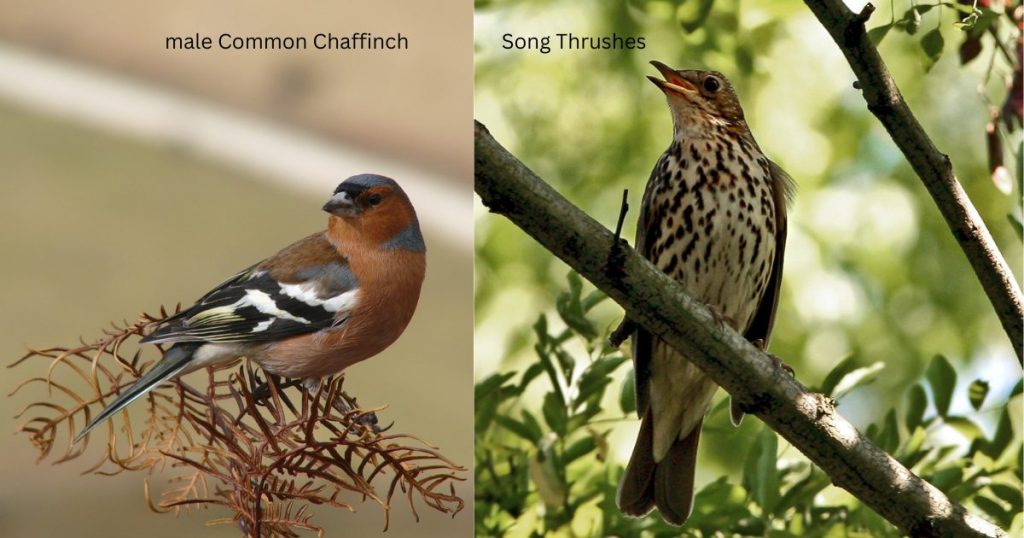
Song Thrushes, another European songbird, are more impressive: each male has about 100 different song types.
Likewise, Common Nightingales may sing 100–200 different song types.
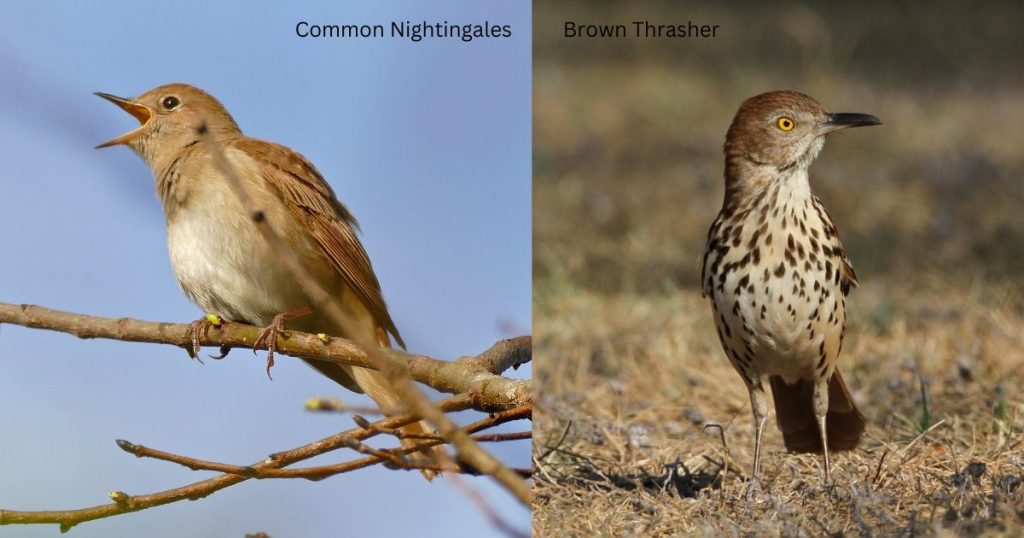
The largest repertoire found so far,however, is that of the Brown Thrasher of North America. When thousands of spectrograms of one male Brown Thrasher were sorted into various categories, he was estimated to sing well over 2,000 different songs.
Birds with simple song repertoires
Although songbird song repertoires can be huge, songbirds of some species use very simple song repertoires. For example, as noted earlier in this chapter, the Black‐capped Chickadee uses one basic “hey‐sweetie” song. Except for slight differences in frequency, all “hey‐sweetie” songs look the same on spectrograms. Other North American species with simple song repertoires include Chipping Sparrows, Indigo Buntings, and White‐crowned Sparrows.
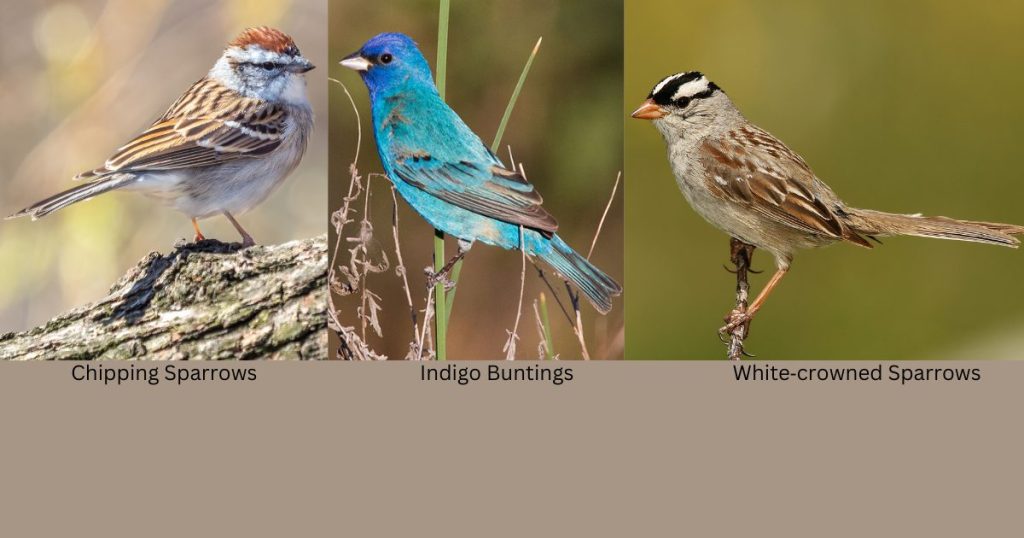
Eurasian species with similarly basic repertoires include Redwings, Short‐toed Treecreepers, Meadow Pipits, and Willow Tits. Members of all these species use one basic song type, and the sequence of notes present in their songs remains essentially unchanged from one song to the next.
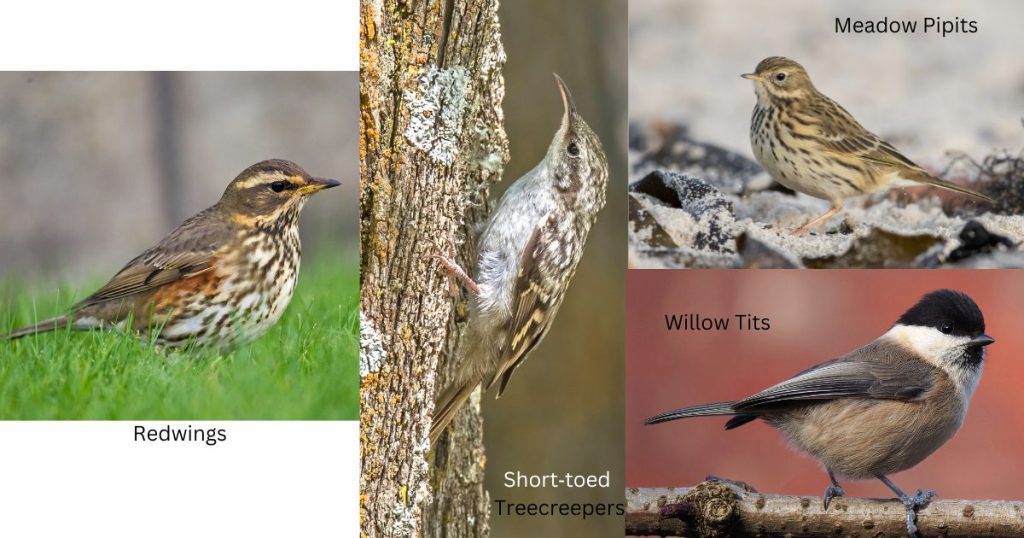
Calls
The term call is applied to any bird vocalizations that compared to songs are shorter, typically simpler, and less likely to function exclusively in mate attraction or territory defense. Although the distinction between calls and songs is not always clear‐cut, in practice a given vocalization usually can be readily classified as either a song or a call. Most bird species have vocal repertoires that include both songs and calls.
Types of calls and its functions
Overall, calls play a big role in facilitating the myriad interactions that characterize a bird’s social life. Calls have a variety of communicative functions, with different calls among species frequently serving different roles.
Contact calls help members of a flock to maintain contact with their companions.
The flight calls of night-time migrants probably serve a similar function.
Food calls attract offspring or flock mates to a newly discovered source of food. A nestling’s begging calls induce its parents to feed them.
Alarm calls will warn other birds of approaching predators. Mobbing calls attract other birds to join in the harassment of a predator.
Aggressive calls help resolve conflicts between birds.
Vocal structure of bird sounds
Bird song researchers refer to the “structure” of bird vocalization, by which they mean a combination of all the features that form the sound, many of which can be found on a spectrogram. These features include the duration of the sound, its frequency, whether the sound is a relatively pure whistle or reaches across a broad spectrum of frequencies at once, whether individual sound units are repeated, and so on.
Alarm calls produced by small birds and predators
To some extent, the structure of vocalization is dictated by its function. For example, the alarm calls that small birds produce when a hawk flies overhead are usually high, narrow‐bandwidth sounds that begin softly, grow louder and then fade away. Sounds with these characteristics, such as the high “zee” of many birds, are difficult for a predator to locate. In contrast, the mobbing calls that songbirds broadcast as they dive and swoop at a predator usually consist of harsh, broadband noise; these sounds are more easily located, thereby revealing the location of the predator and encouraging other birds to join the mobbing attack. More generally, sounds associated with aggression are often broadband noise emphasizing low frequencies, and appeasing sounds are higher in frequency.
Habitat and song complexity
The structure of complex songs also be influenced by the type of habitat in which a bird sings. The sound characteristics that are optimal for long‐distance transmission of vocal signals vary among different habitats, and song structure may evolve to maximize transmission effectiveness in a particular habitat. For example, songs of the Great Tits that breed in Great Britain differ consistently in dense forests versus more open woodlands; forest songs are simpler, lower in frequency, and contain purer tones. Similarly, Satin Bowerbirds living in dense rainforests in Australia use vocalizations that are lower pitched and have fewer trills compared with bowerbirds living in more open habitats.
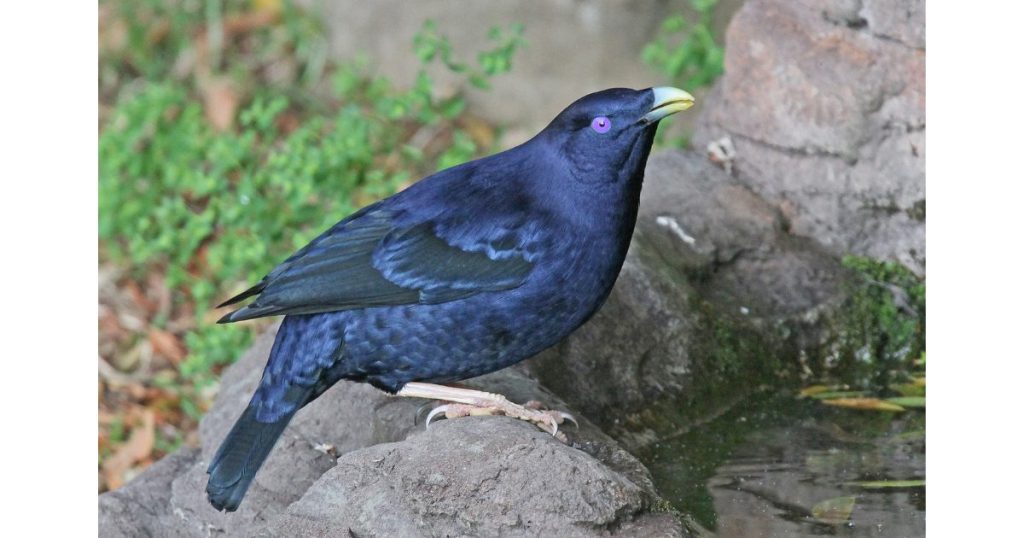
Bird species that live near the ground often use songs dominated by low‐frequency, fairly pure tones, as reflections off the ground cause sounds that are higher than 1 or 2 kilohertz to transmit poorly. Thus, the low frequency, often tremulous whistles that are conspicuous components of tropical forest soundscapes are, in many cases, voiced by ground‐dwelling birds such as tinamous.
What do bird sounds mean?
Many of the researchers who study and document the vocal repertoires of birds worry that the way humans classify birds’ signals may not match the type of classifications used by the birds themselves. Our main tools of analysis, such as spectrograms, are relatively crude ways to picture a sound, showing only selected features of this extremely rich form of communication. The visualized features may be important, but in reality, we usually do not fully understand which features the birds themselves really attend to.
Black‐capped Chickadee simple “chick-a-dee” call and its complexity
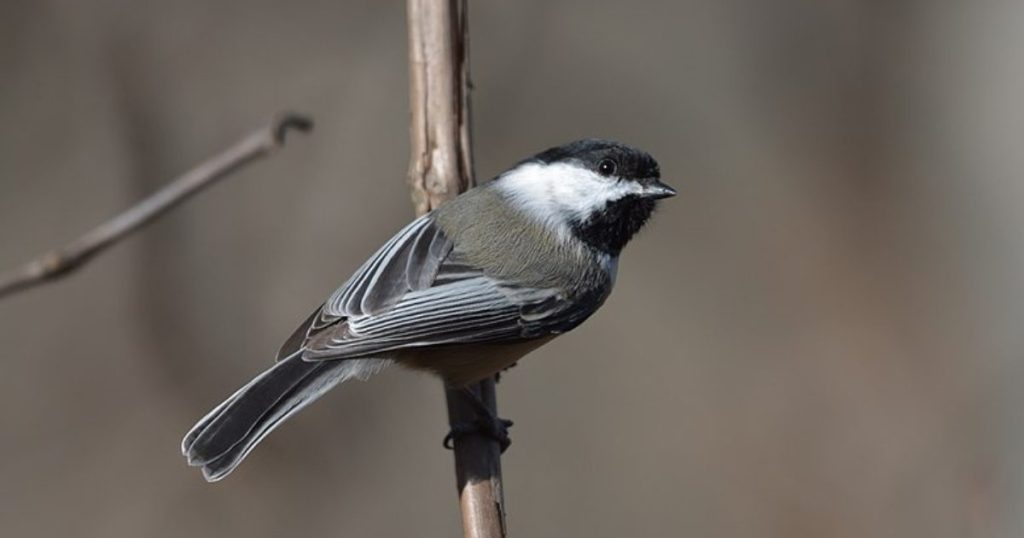
In fact, birds may make use of a far greater variety of sounds than we appreciate. Reconsider the Black‐capped Chickadee’s seemingly simple “chick-a-dee” call. The initial part of this call consists of four different notes: ‘a’, ‘b’, ‘c’, and ‘d’. Most “chick‐a‐dee” calls contain these four notes, but the birds deliver the notes in different combinations, and with differing numbers of repetitions, to form hundreds of qualitatively different kinds of calls. In addition, each note’s structure is variable, so each combination of different notes itself has dozens of potential variants.
Do chickadees transmit different warning messages with all these different combinations and variations?
This is a challenging but intriguing question. Building on an earlier discovery that chickadees produce “chick‐a‐dee” mobbing calls in response to the presence of stationary or perched (but not flying) predators, researchers have discovered that the number of notes in a call differs depending on the size of the predator. In an experiment, smaller predators such as Northern pygmy owls and Merlins elicited “chick‐a‐dee” calls that contained more “dee” notes than did the calls produced in response to larger predators such as Great Horned Owls and Gyrfalcons.
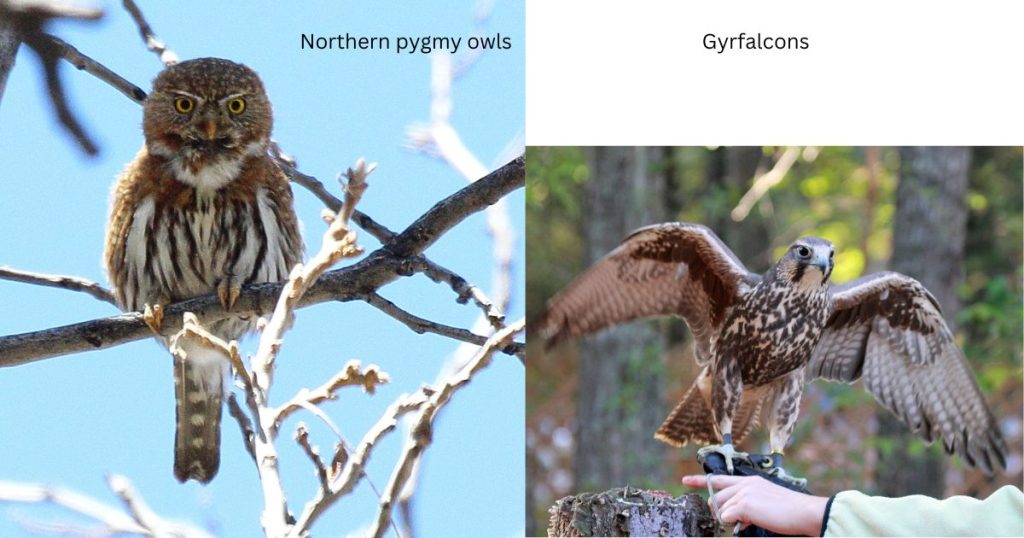
Thus, longer calls with more “dee” notes might indicate the greater threat posed by smaller predators (which are more likely to prey on small birds such as chickadees than larger predators).
Do chickadees actually use variations in the number of “dee” notes to communicate this kind of information?
Perhaps so: when experimenters played recorded “chick‐a‐dee” calls through a hidden speaker, responding birds approached more closely and stayed longer (as if aggressively mobbing) in response to calls with multiple “dee” notes than to calls with fewer “dee” notes.
Non‐vocal sounds
In addition to the songs and calls that seem to dominate avian acoustic communication, birds produce a variety of non‐vocal sounds. Some, such as the whooshing sound we hear when a flying bird passes nearby, are probably just side effects of a bird’s normal movements. However, many non-vocal bird sounds appear to be evolved signals that function in communication.
Woodpecker drumming
Woodpecker drumming, for example, occurs mainly during the breeding season, and drumming birds choose to drum on surfaces that yield especially loud and long‐lasting sounds when struck repeatedly. These observations hint that a woodpecker’s percussive performances generate long‐distance signals that function in territory defense or courtship, much like the songs of passerine birds.
Process of woodpecker drumming
The rapid drumming of a woodpecker is made possible by a suite of special anatomical features that allow it to bang its head forcefully on a tree many times per second without losing consciousness or sustaining brain damage. At least one non‐woodpecker species without these adaptations nonetheless manages to produce percussive sounds by using tools to strike hollow tree trunks. Palm Cockatoos in New Guinea and northern Australia use their bills to craft a drumstick from a small branch. The bird then grasps the stick with its foot and bangs it rhythmically against a hollow tree. The resulting drumming sound is audible to human listeners more than 100 meters away.
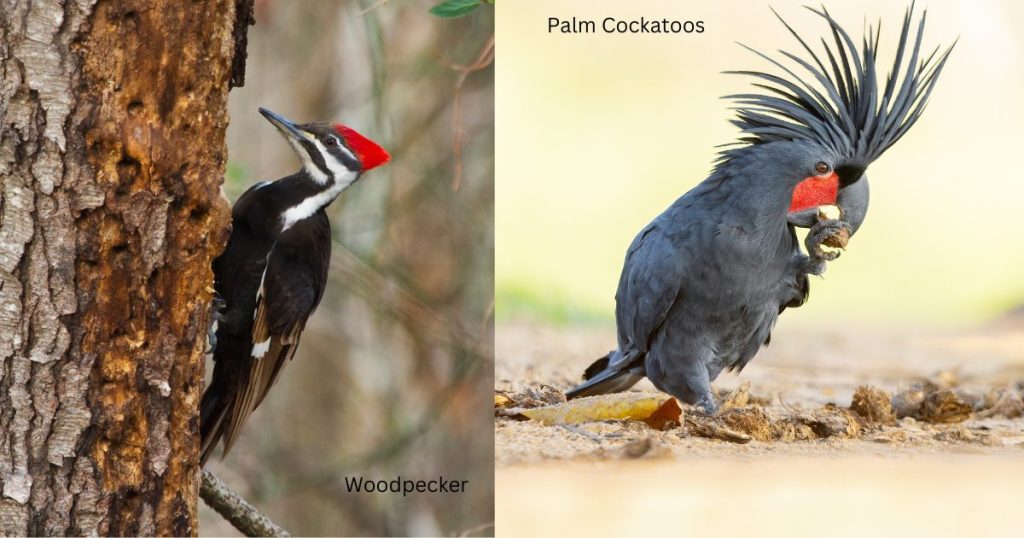
Sounds are produced by feathers
Many non‐vocal bird sounds are produced by feathers, most commonly by wing or tail feathers. For example, feathers are responsible for many of the sounds produced by displaying hummingbirds and manakins, and for those produced during the aerial courtship display of the American Woodcock. The twitter audible during a displaying woodcock’s ascent is produced by air moving over its rapidly flapping wings and vibrating three specially modified, narrow wing feathers.
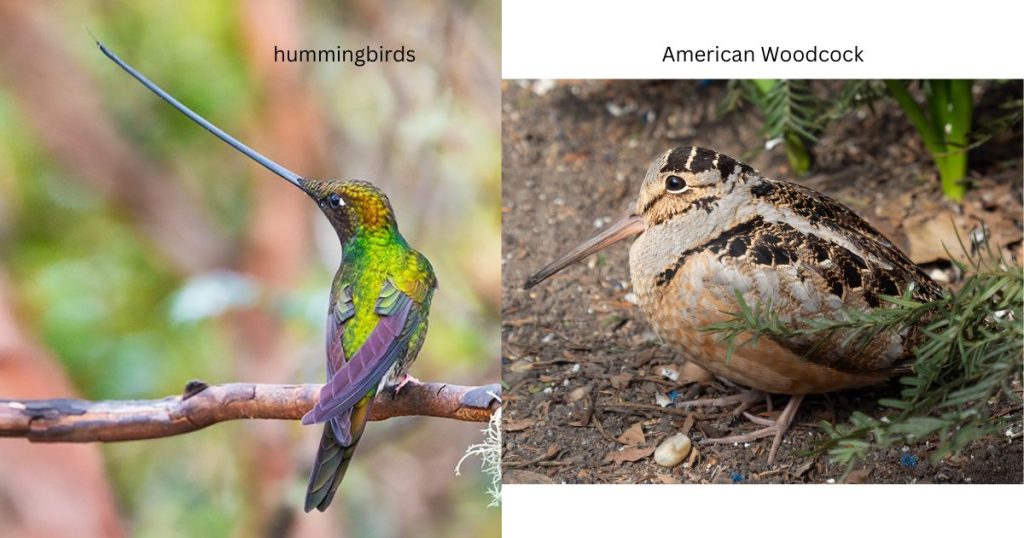
The conclusion that woodcock twittering is produced by wing feathers arose mainly from close observation of displaying birds and an assumption that the three strangely modified wing feathers must be involved. In recent years, however, this kind of educated guesswork has been superseded by more sophisticated methods of establishing the mechanisms by which non‐vocal sounds are produced. A key advance in this endeavor has been the advent of the high‐speed video recorder, a tool that allows researchers to record videos that can be played back in super‐slow motion. In one study, for example, researchers placed the outer tail feathers of museum specimens of Common Snipes in a wind tunnel and classified them as either a song or a call. High‐speed video recordings as air moved rapidly over the feathers. In the wind tunnel, the feathers emitted the distinctive “winnow” sound that living Common Snipes make during the high‐speed dives that are part of their courtship display. Analysis of the video revealed that the vanes on one side of each outer tail feather flapped up and down rapidly once the wind speed became fast enough.

The flapping produced the characteristic sound, probably by a mechanism identical to the one by which a flag flapping in the wind produces sound.
Call notes and their functions
Birds employ a tremendous diversity of vocalizations. These diverse signals can be classified into two broad useful categories: songs and calls. Calls are generally shorter, softer, and less complex than songs. Although calls may be less conspicuous than songs, they are essential components of birds’ vocal repertoires. Let us analyze some examples of calls.
Waxwings
Not all songbirds sing. Some species do not need a loud, complex vocalization that is to be broadcast far and wide. The waxwings of the northern hemisphere, for example, have no recognizable “song,” at least as we have come to know the song in other species. Their sounds have been broadly classified into two categories, the “bzeee” call and the “seee” call. In Cedar Waxwings, the difference in these two sounds can be heard easily because the “bzeee” has a buzzy or rattling quality, and the “seee” is a high‐pitched, hissy whistle. However, careful analysis reveals that the birds use a tremendous diversity of subtle variants. Some variants are given during flocking, some when the male and female nest building, some by nestlings, some during courtship feeding, and so on.
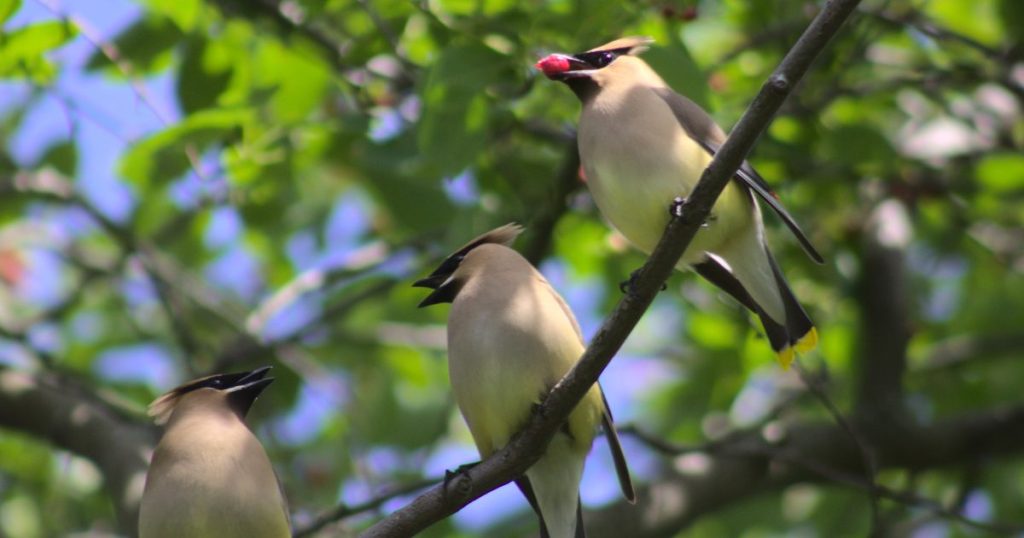
Red‐winged Blackbirds
Red‐winged Blackbirds in North America use a tremendous variety of calls. Especially intriguing are the various calls that the males use as they perch on their territories. Investigators have established seven broad categories of these sounds: “check,” “chuck,” “chonk,” “chick,” “chink,” “peet,” and “cheer.” Neighboring males tend to use the same call, such as the “check,” simultaneously, but then they all seem to be switching to another call, and eventually another. Waves of call usage spread throughout the marsh, like shock waves spreading out from an epicenter. Do any of the different sounds convey a particular meaning about a particular circumstance within the marsh? Or perhaps the vocalization itself has no special significance, but rather the change from one vocalization to the next has particular meaning. Female Red‐winged Blackbirds also have some loud vocalizations. One is the “chit,” which is often delivered immediately after the male’s song so that the two vocalizations overlap; this duet between males and females is heard frequently in marshes throughout North America. The “chit” seems to encourage the male to guard the female’s nest against predation and to discourage him from harassing her. The female has a second loud vocalization, the “cheer,” which she uses in aggressive encounters with other females.
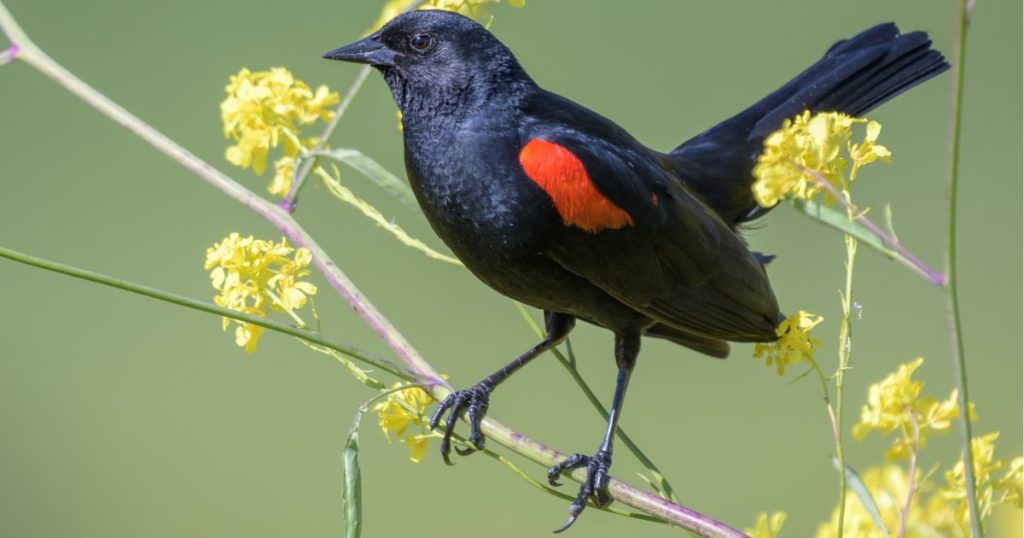
Greater Racket‐tailed Drongos
Calls can sometimes communicate across species boundaries. In Sri Lanka, Greater Racket‐tailed Drongos spend much of their time in mixed‐species flocks that typically include 40 or so birds belonging to a dozen or more species. A drongo uses a variety of calls, including alarm calls that it utters when it detects a predator approaching, such as a hawk. Birds of other species in the flock will scatter when they hear a drongo alarm call. That is, the drongo’s flock-mates treat it as a kind of sentinel and scramble to safety when the drongo signals its alarm. The drongo enhances its effectiveness as a sentinel by mimicking the alarm calls of other species in the flock and mixing the mimicked calls in with its alarms. On occasion, a drongo may also produce an alarm call when no predator is in the vicinity. Other birds tend to respond to these false alarms as if they were real. The drongo’s foraging success increases after it gives a false alarm, probably because startled birds of other species drop or abandon food that the drongo then snaps up.
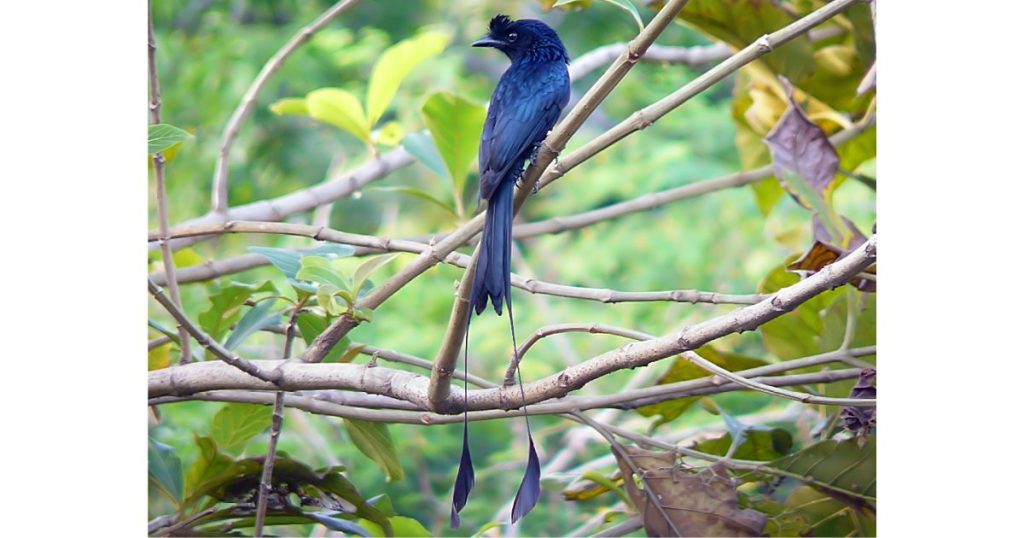
Eastern Phoebes
The vocalizations of the Eastern Phoebe of North America provide a final example illustrating the diversity of calling behaviors among passerines. The most common phoebe call has been described as most “clear, sweet, weak chip” or simply a “tp,” and it is given in a variety of contexts. It typically is used in aggressive encounters, but it is also used by lone birds when foraging during migration or on non‐breeding grounds. If a predator is encountered near the nest, this call will become more emphatic. The same vocalization seems to serve a variety of purposes, and thus the real meaning of the vocalization may depend on the circumstance in which it is used.
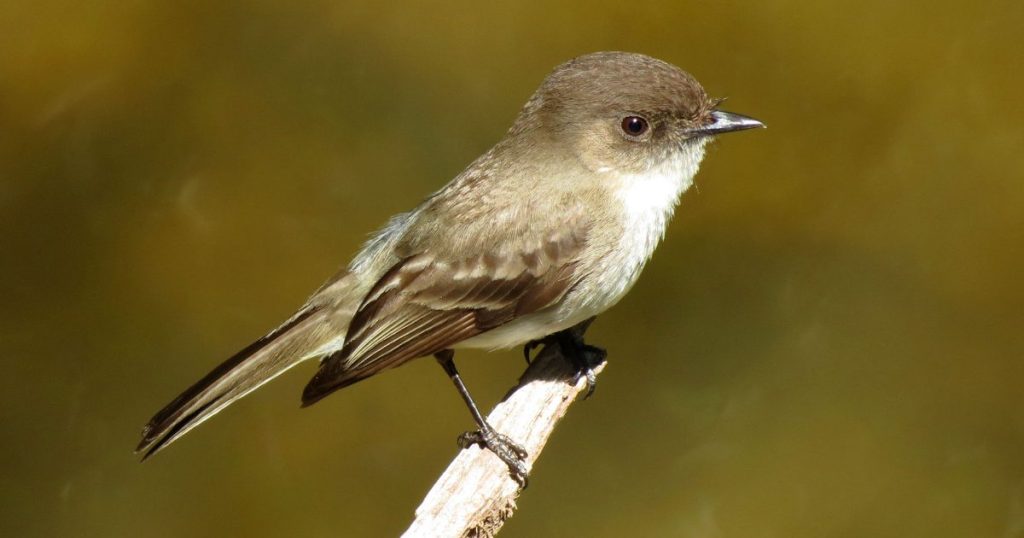
Our understanding of the purposes of avian vocalizations to other birds is truly in its infancy. Our current classifications may bear little resemblance to how birds actually hear and use their vocal signals, and we must remember that our ultimate goal is to ascertain how they do this.